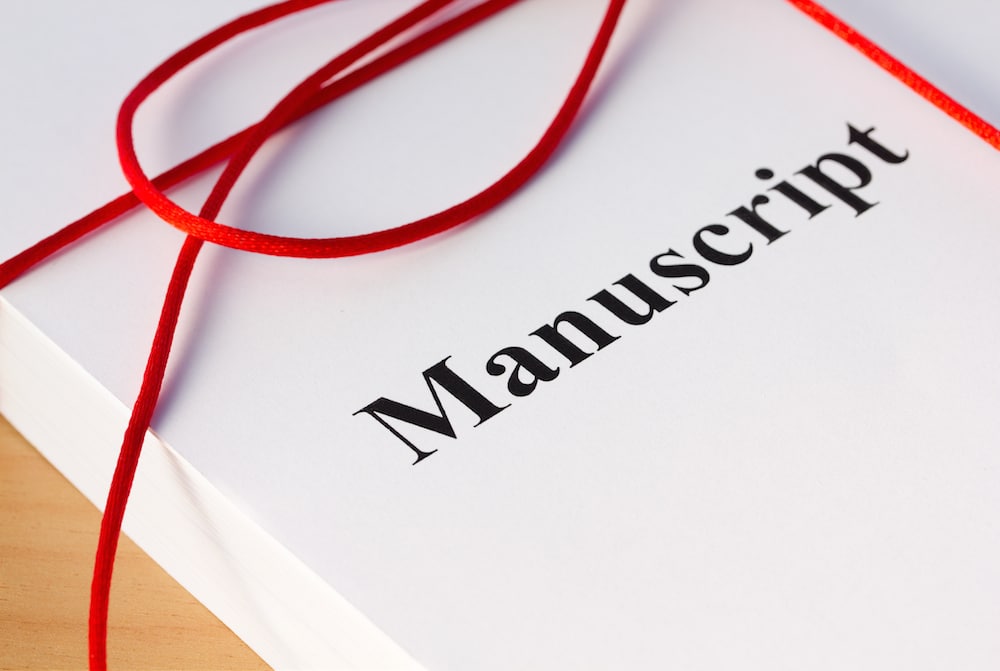
If you think that manuscripts are judged solely on the merit of the story alone, we think you should be sitting down for this next paragraph.
It doesn’t matter how many on-trend zeitgeist-welding hipsters your story possesses, if a manuscript offends in some other way, it may never be read. We’re talking about things that distract a reader from delving any further.
You see, for editors, it’s hard work wading through countless manuscripts each week. And your goal as a writer is to not make that job any harder!
Last year, Marty Green, the Director and Chief of Submissions at Pantera Press – an Australian-based publishing company that openly accepts unsolicited manuscripts – guest blogged his guide to submitting. And we’ve simplified his initial post into FOUR main rules here.
Marty says that “reading a book is similar to listening to someone speak”. So lose the stutter and anything else that stops them being heard cleanly.
Stick to a normal, legible font. Think Times New Roman or Cambria. Avoid Typewriter font and if you turn up to the publishing house gates with Comic Sans, you’ll hear “You Shall Not Pass!” faster than you can say semi-bold. Speaking of bold, don’t. And italics – only sparingly. As for point size, 12 is a pretty good number, and no smaller than 10.
Anywhere between 250 and 500 words on each page is fine – no odd gaps, pauses, or stumbles. Ensure your formatting (spaces in the right places) and punctuation (dots ’n’ dashes) is consistent. No distractions, no sudden moves – the only surprises you should be giving the reader is when the narrator dies on page 2.
Chances are that if you are submitting a manuscript in this way, you’re fairly new at this. So don’t overdo it. Plastering “COPYRIGHT” as a watermark on every one of your pages is completely unnecessary (not to mention distracting) – your work is automatically covered by copyright as soon as you write it.
Unless you’re certifiably amazing, don’t waste time making your own cover. “We work with a team of graphic designers and marketers,” says Marty. “They make our covers stand out, and we’re very proud of them.” It’s not school, and cover pages aren’t part of your grade anymore. So getting fancy on Microsoft Word (or even Adobe InDesign) is not really going to do anything for your chances. Spend that time on the words. They are the heroes here.
Cover artwork may be unnecessary, but a kick-ass cover letter is essential. After all, you’re a writer. You’ve just completed umpteen thousand words of manuscript. You can surely craft another hundred or so on nailing your cover letter!
“While publishing a book has infinitely more to do with the strength of the manuscript than an author’s cover letter,” says Marty, “you should remember to put the relevant effort into it, observing what the publisher has asked for.” At Pantera, for example, they ask for a one-page author biography with every submission, to find out who you are and what you do. Make it thoughtful and intelligent; if you’re funny, make it funny. “Your bio is where we first get to know you, and we want to know your best you.”
If they ask for a synopsis (which they probably will), don’t give them teaser/blurb! “You’re not trying to entice a publisher to read your work in the same way a book tries to attract readers in a store,” says Marty. You already have their attention, so simply sum up the main plot points of your story – allowing quick ready reference.
Also, be nice. This is a collaborative process and you need to show that you’re someone they want to work with. Be polite, never rude or demanding. “This rule will actually get you really far in all areas of your life,” suggests Marty. And we agree.
“Publishers want to know in advance that you’re willing to help make your story the best it can possibly be,” says Marty. “So when an author delivers a manuscript filled with spelling or grammar errors, it doesn’t inspire a publisher to have confidence in the author’s work ethic.” Make sure you read your work – and get others to read your work – thoroughly.
Likewise, submit to the exact guidelines of that publisher. This means respecting the asked-for method and especially in the right file format. Because if you can’t nail instruction number one from your publisher, what does that say about a potential working relationship?
And finally, don’t be discouraged. Your manuscript is unlikely to be everyone’s cup of tea, and it may be sipped at more times than your fragile ego had planned for. But if you really believe in your book, then you must keep trying to get it right, get it right, get it right in front of the person who’s right for you. “There are many reasons for a rejection, and many have nothing to do with the quality of the story itself,” explains Marty. “Virtually every best-selling author was rejected by every publisher they contacted except the one where they found their eventual home.”
This blog post was adapted from a guest post by Marty Green. Marty Green is the Director and Chief of Submissions of Pantera Press, an Australian-based independent publishing company with philanthropic ideals of good books doing good things.
You can find the Pantera Press submission guidelines here.
About us
Contact us